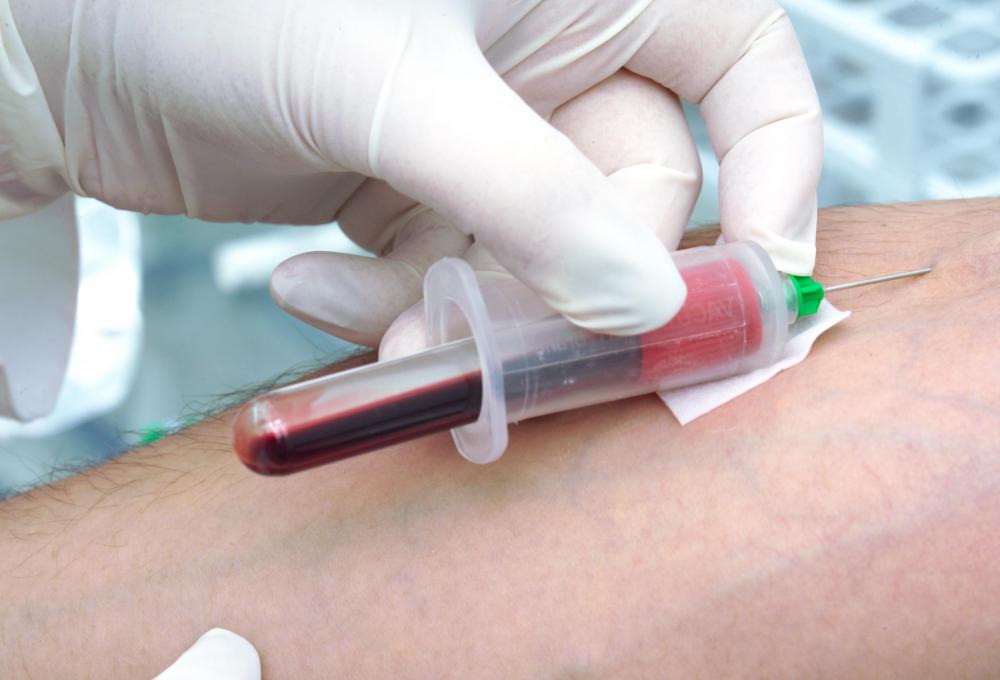At WiseGEEK, we're committed to delivering accurate, trustworthy information. Our expert-authored content is rigorously fact-checked and sourced from credible authorities. Discover how we uphold the highest standards in providing you with reliable knowledge.
What Is Therapeutic Phlebotomy?
Phlebotomy is an area of medicine that involves the withdrawal of blood from a vein. Although blood loss is generally undesirable for most people, there are certain conditions that can actually be made better through deliberate removal of blood. These conditions, which are primarily caused by abnormalities of normal blood constituents, include hemochromatosis and sickle cell disease. A therapeutic phlebotomy can temporarily alter the composition of the blood, and improve the symptoms of the disease.
Originating from the Greek words phlebos, meaning veins, and tomos, meaning to cut, phlebotomy refers to any medical procedure that involves cutting a vein open to take out blood. Blood donations are an example of phlebotomy, but they are not therapeutic, because the removal of the blood does not help improve a person's medical condition. A therapeutic phlebotomy is one that directly benefits the person who has his or her blood removed.

People with conditions that may require a therapeutic phlebotomy typically have blood disorders. These disorders may produce higher levels of a certain blood component than normal. An example is the disease hemochromatosis, and patients with this disorder are unable to properly control levels of iron in the blood. Too much iron can cause symptoms like feeling faint, abnormal tiredness and dark skin patches. If the condition does not receive treatment, then the excess iron can cause liver problems and even cancer.
Some diseases of the heart and blood vessels can also cause abnormal levels of blood cells to build up in the body, which can cause damage if left untreated. A group of diseases called porphyrias produces high levels of molecules called porphyrins, which can lead to muscular weakness and even heart attack. Therapeutic phlebotomy can potentially help all of these conditions, simply by removing some blood from the body, therefore reducing the concentration of the undesirable substances overall.
Typically, a therapeutic phlebotomy is just like a blood donation. An important difference is that a patient may need to give a small sample of blood prior to the procedure so an analyst can check concentrations of substances in the blood to calculate how much blood needs to be removed for the optimal alleviation of the condition. Generally, patients are instructed to eat something before the procedure, to ensure they do not feel faint after the phlebotomy.
A nurse applies a pressure cuff to one arm of the patient, and inserts a needle into a vein in the arm. He or she then allows the vein to pump blood out of the body over the space of 15 to 45 minutes. Generally, the nurse removes about a unit of blood, which is about 1 pint (500 ml) per session, although this can be tweaked to suit the individual. Repeated sessions every week or so may also be necessary to give the patient the best outcome. Therapeutic phlebotomies are not cures for diseases, but rather a temporary solution to a problem.
AS FEATURED ON:
AS FEATURED ON:











Discuss this Article
Post your comments